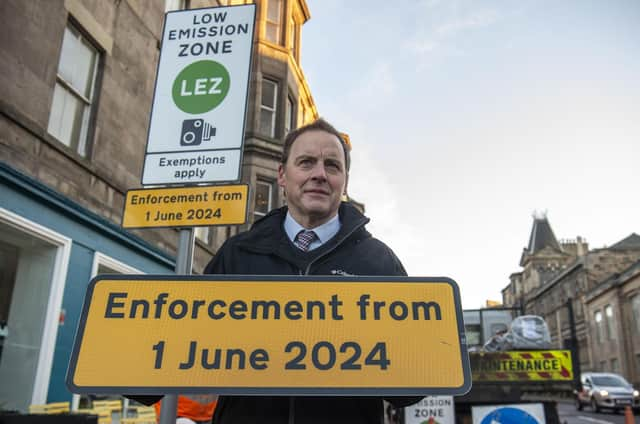LEZ will just displace pollution, as car wars keep on trucking - John McLellan


The sample of 768 Edinburgh residents by poll firm FindOutNow on behalf of the Alba Party ─ no surprise the breakaway Nationalists scent an opportunity to split the local SNP ─ is an admittedly small sample but nonetheless exposes a basic problem with the planned restrictions. Not enough people think it will make much difference.
When the don’t knows are removed, it’s an even split between supporters and opponents.
Advertisement
Hide AdAdvertisement
Hide AdThe propaganda surrounding the scheme was all about vehicle emissions harming people, as if those opposed were somehow in favour of terminal respiratory illness, but objections were two-fold; that the plans would not make any difference, and the restrictions would disproportionately affect poorer people.
The latter is beyond question. Most people driving petrol cars over 18 years old or a pre-2015 diesel won’t be flush, and less able to replace their vehicles or pay fines if they transgress. We took the hit by trading in the diesel which missed the cut-off by a year and went electric, at a cost of over £30k, and were lucky we could do so.
On the former, a Scottish Environment Protection Agency (SEPA) study in May 2021 identified the most polluted streets were Princes Street, Lothian Road, Bridges, Leith Street, London Road, Queensferry Road and St John’s Road/Glasgow Road, but the last three aren’t covered by the new zone.
As cars can’t use Princes Street, it means only three of the most heavily polluted streets are covered, and the rest of the area is below legal limits anyway.
Advertisement
Hide AdAdvertisement
Hide AdIt’s also notable that although both Queen Street and Princes Street have higher pollution levels, George Street is not affected as much because it is not a bus route. That’s borne out by my bike trips into town, with Princes Street by far the worst experience because of both fumes and a general sense of danger, particularly Eastwards.
As only buses more than ten years old are likely to be non-compliant, the LEZ will do nothing to make Princes Street a better experience, even if the North side ever manages to tidy itself up.
People with non-compliant cars will only enter the zone by accident so they will quickly avoid it after the first fine, so the LEZ’s biggest impact is likely to be on cross-city car journeys, with people in non-compliant vehicles finding ways round the LEZ, and so adding to the pollution in the surrounding streets.
And sure enough, the SEPA analysis concedes that pollution levels will rise on Chester Street, Palmerston Place, Gardiner’s Crescent and Grove Street. And they are only the streets on the very edge of the zone. The displacement effect will be wider.
Advertisement
Hide AdAdvertisement
Hide AdDriving into town is already a hideously expensive business at £6.70 an hour for street parking ─ although the St James Quarter car park is “just” £9.90 for three hours ─ and together with the changes planned for George Street and Historic Environment Scotland’s plan to ban all traffic from Holyrood Park, the goal of a virtually car-free city centre isn’t far off.
